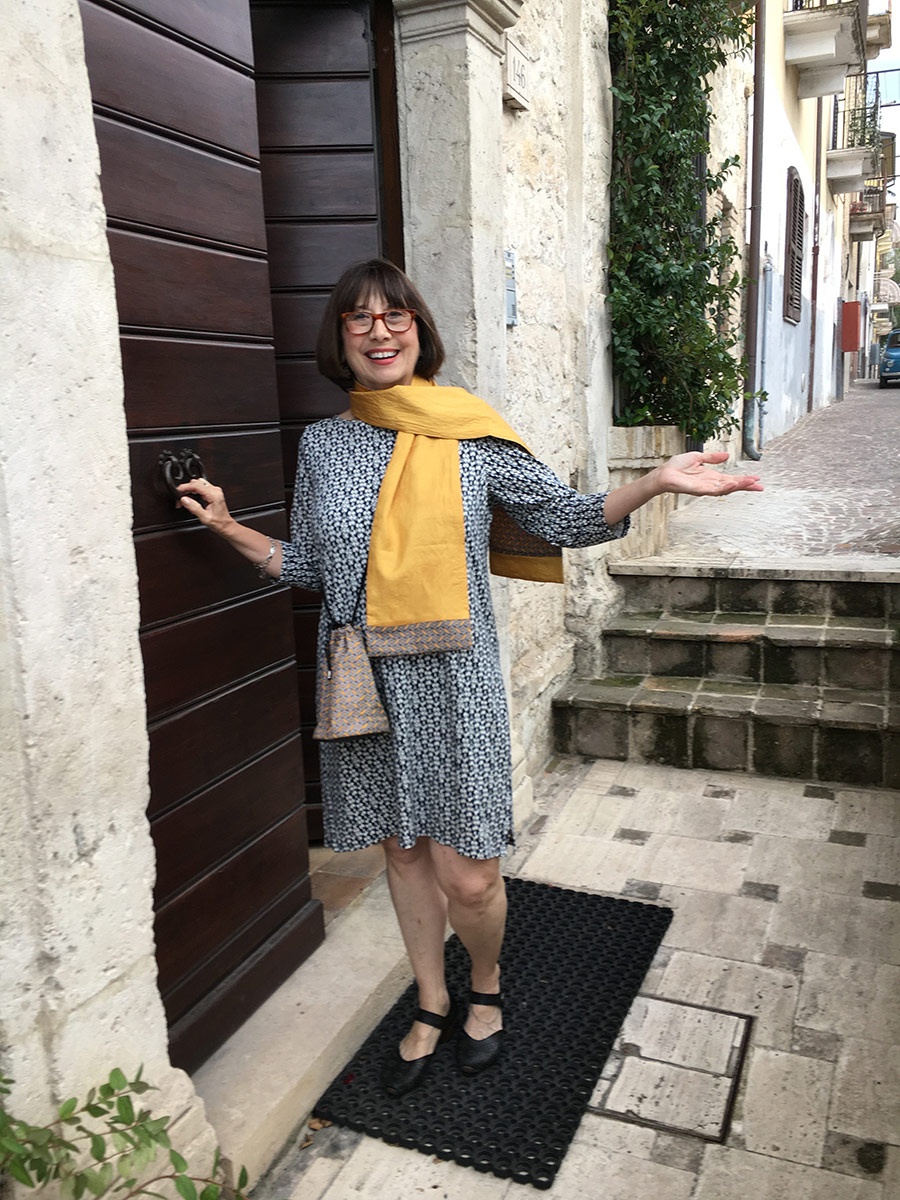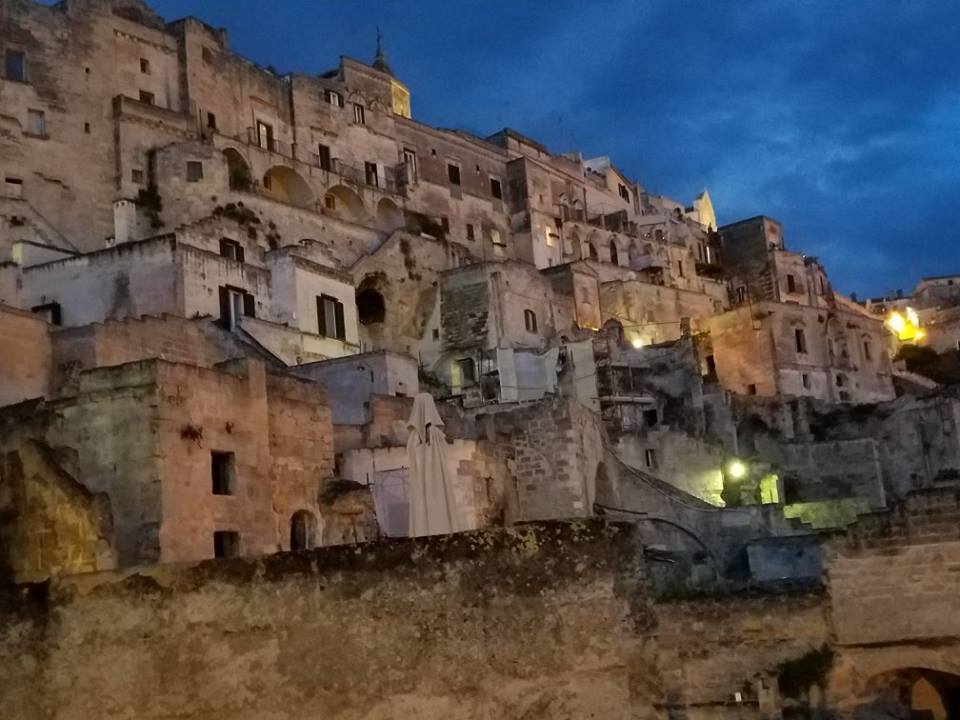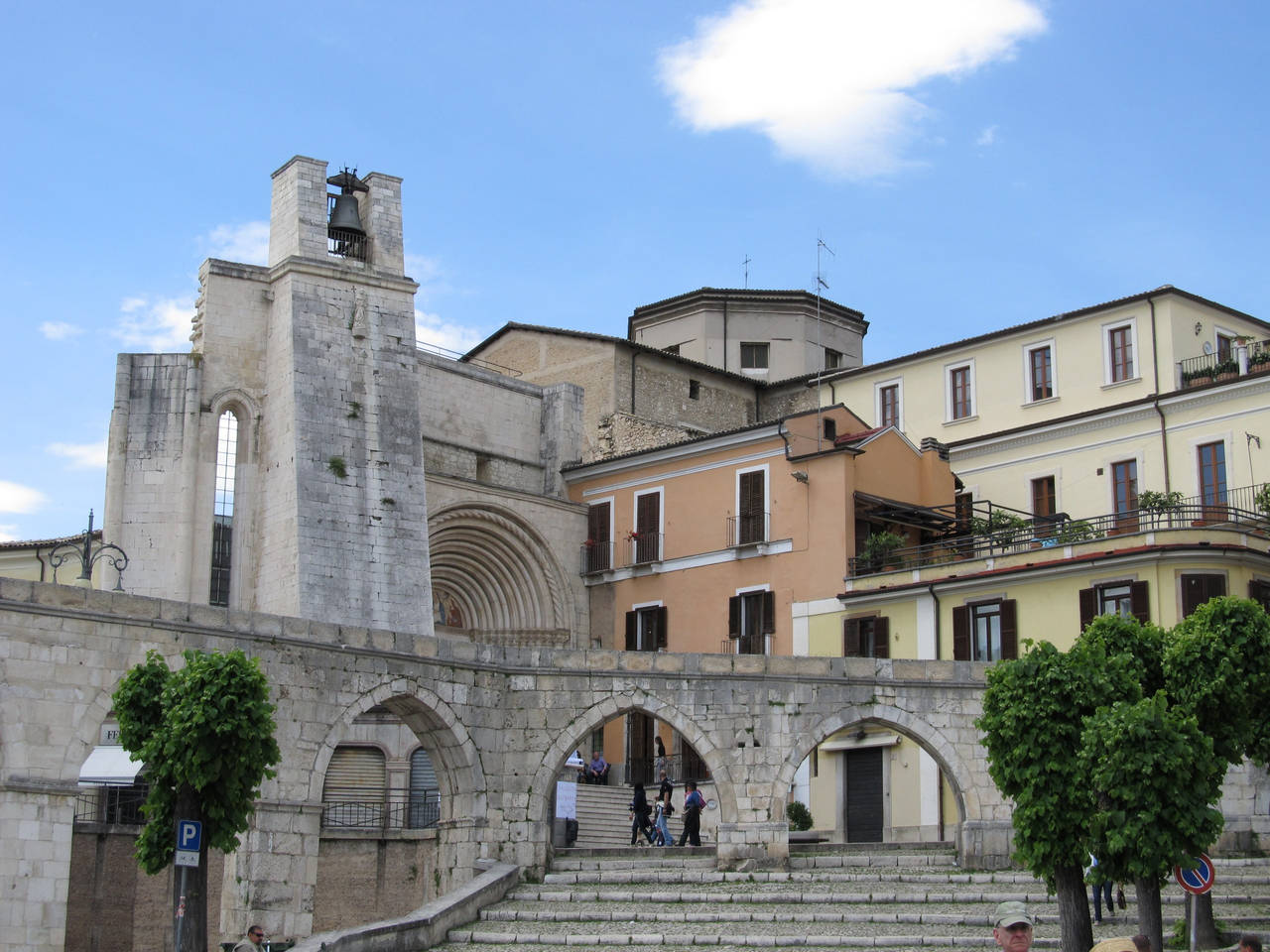“Traveling in the company of those we love is home in motion.” — Leigh Hunt
It all started with the drink. I’ve adopted an Italian favorite as my summer drink this year. A tall, cold Campari and soda with a twist of lime. It’s the prettiest drink you’ve ever seen and — although I’ve been told it’s an acquired taste — it goes down very easy for me and it refreshes. In this summer of consistent 90-plus temperatures, that’s a good thing. But sitting on our deck, nursing the aforementioned beverage and twirling the end of the lemon patterned tablecloth that I bought in Sorrento a few years ago, I wondered why the hell I wasn’t in Italy. And then I wondered where I would want to be if I were. And I thought of Ferrara, that bicycle-mad city in the north.
I had gone to Ferrara the first time in May 2003 — May 25, to be exact. It was our friend’s
birthday and that’s where he wanted to go. So we took a side trip from our villa in Sermide and drove the hour to Ferrara where, it just so happened, the Palio was taking place. How lucky can you get?
The Palio of St. George takes place on the last Sunday of May and begins with an indescribable parade from the Castello Estense to the palio grounds, where donkey races, horse races and other athletic competitions pit one comune against another in true medieval festival tradition. Representing the inhabitants of the various neighborhoods, or comuni, the Ferrarese walk regally through town dressed as royalty, as military men, as religious, as families, as entertainers . . . the only place you’ll see finer costumes is at a major opera house.
And when these Italians are in costume, it’s like you’ve walked into a Renaissance painting. This was a stunning and surreal sight to happen upon. While there were no tickets available for the main event, we did get to see the preliminary donkey races and were there long enough to scoop up a few of the palio flags. Quite a day.
I was there again last September — this time, scheduled perfectly for the hot air balloons. In recent years, Ferrara has become the center of hot air ballooning and I must tell you that it is absolutely otherworldly to see Professor Marvel’s airships silently gliding over this old, historic city. What a crazy juxtaposition!
Ferrara is one of those remarkably well-located cities in Italy for visitors. On the same rail line as Bologna, Padova and Venice, Ferrara is the capital of its province, located in the region of Emilia-Romagna and situated on an extension of the Po River called the Po di Volano. A UNESCO Heritage Site, Ferrara is a beautiful walled city (the walls were begun in 1493) and is home to the second oldest university in Italy, which was established in 1393. Copernicus, a local boy, was a graduate of the University of Ferrara.
Tim and I went to Ferrara with our friends Jerry and Sharon and we were on a kind of mission. First we found the Jewish Cemetery near the city walls off Corso Porta Mare. It is a monument to the Ferrarese who died at Auschwitz (remember the movie The Garden of the Finzi-Continis?) and a reminder of the huge Jewish community that once thrived in the city. After that, we went looking for the old Synagogue and Jewish Museum, located in the heart of the medieval center of the city. This area was part of the Jewish Quarter in which the Jews were separated from the rest of the city from 1627 until 1859. After we found those, we were going to have lunch in the Osteria del Ghetto. Well, we timed it perfectly: the synagogue and museo were closed, so we only got to read the signs outside. But the restaurant was open for business and it was terrific.
Located on Via Vittoria, right in the heart of the Hebraic Ghetto of Ferrara, Osteria del Ghetto offers up carefully made regional and seasonal specialties, including mushrooms, pumpkin-stuffed pastas, horse, pork, wild boar, lamb and so on. And the desserts are spectacular, favoring marscapone cheese, fruit and chestnut honey. Add to that a wine list of 150+ selections, and you’ve got good reason to linger a while. Which we did.
After lunch we needed a walk, so we continued on about four blocks to Via degli Adelardi where we found the oldest “hostaria” in the world. According to the Guinness Book of Records, Al Brindisi was already known in 1435 and had an impressive list of patrons, among them the artist Titian and Torquato Tasso, the Sorrentine poet who spent some time in the Ferrara looney bin during his bout with insanity. (Hopefully, it had nothing to do with the wine selection . . .)
Apparently, Copernicus not only graduated from university in Ferrara, but he also lived in the first floor of the Al Brindisi building for a while. And we also learned that in 1973, on the occasion of Copernicus’ 500th birthday, both Pope John Paul II and Cardinal Wiszinsky of Poland visited the hostaria. We spent a fair amount of time talking to the current owner, who has had the establishment handed down to him, as did his father before him. He loves American jazz and knows a whole lot about wines. We had a great time talking with him, but had to move on eventually.
The city has lots to offer. In 2006 Ferrara was named as a headquarters of the Italian Hermitage Museum — only the fifth city in the world to be linked with the iconic Russian institution. The city is anchored by the incredible Castello Estense, the defensive fortress of the Este dynasty which ruled the countryside for 400 years and produced — in addition to parks, palaces, and gardens — the duchess Lucrezia Borgia. A towering building constructed of the city’s famous rose-colored brick, Castello Estense is surrounded by a moat and drawbridges, while its four tall bastions keep a watchful on the city’s citizens. But this is no ordinary ruin of a castle. With its frescoed walls and frescoed, vaulted ceilings, court kitchens and apartments, a loggia, garden and chapels, the Castello Estense is a magnificent structure that encapsulates some 500 years of history.
And let’s not forget the overseer of the original “bonfire
of the vanities,” Giralomo Savonarola, the 15th Century Dominican priest and political reformer who was another of Ferrara’s native sons. Oh, he had a tough time of it: accused of heresy, excommunicated and finally both hung and burned. His likeness still stands in one of the piazzas, reminding us that life under the Medicis could be a bit uneven.
Other attractions include the University of Ferrara, the old City Hall with its Renaissance campanile, and the Palazzo Schifanoia, built in 1385 for the Este family, with its frescoes depicting the life of Borso d’Este, the signs of the zodiac and allegorical representations of the months. And there’s so much more. The certosa (a Carthusian monastery), Corpus Domini Monastery, several more Renaissance palaces, a dozen or more churches . . . just a typical little Italian city. Not.
So as I sip my Campari here in Vriginia, I realize that Ferrara is just another one of those magical places that I need to go back to, like so many other places I’ve seen in my Italian travels. Like Lucca, Sorrento, Verona, Padova. Sigh. Once is not enough. And bring on the cappellaci di zucca!
Buon viaggio!

Linda Dini Jenkins is a card-carrying Italophile, travel planner, freelance writer, and amateur photographer. Travel is her passion, so writing about her travels just comes naturally. She hopes all her travelers find a way to express their joys, surprises, and fears as they travel and gives every traveler a nifty journal to help smooth the way. Learn more…










